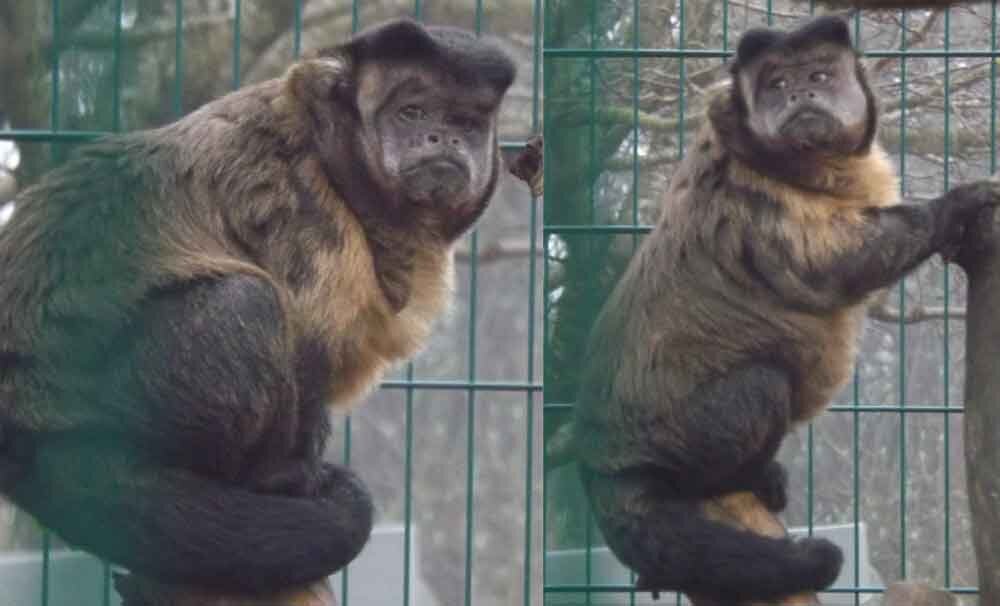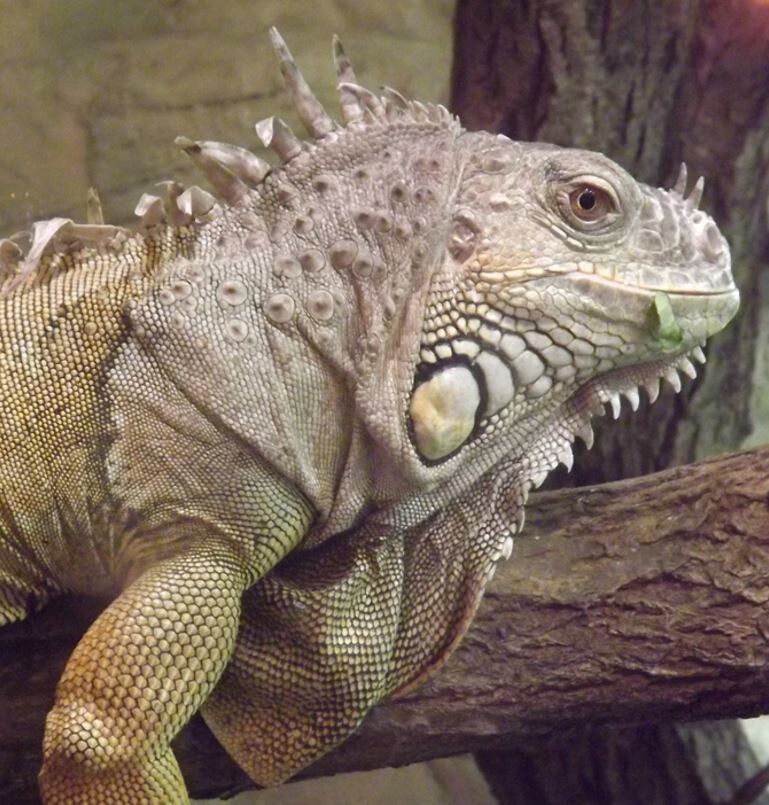It’s time once more to do a zoo review…
Tet Zoo Reviews Zoos: Tokyo’s Ueno Zoo
Tet Zoo Reviews Zoos: New Forest Wildlife Park
Tet Zoo Reviews Zoos: Tripoli Zoo in Libya
Tet Zoo Reviews Zoos: Bristol Zoo
Tet Zoo Reviews Zoos: ZSL Whipsnade Zoo
Tet Zoo Reviews Zoos: the Isle of Wight Zoo
Regular readers might be aware of my ‘TetZoo Reviews Zoos’ series which hasn’t – so far – been all that active or successful when it comes to completeness of coverage or regularity of appearance. I aim to rectify that through the course of this year.
Caption: there are a few articles in the TetZoo archives on zoos, but not nearly as many as I’d hoped there’d be by now.
Today, I want to talk about a small zoo that’s close to me here on the southern coast of the UK: namely, the Isle of Wight Zoo at Sandown, Isle of Wight. The zoo has a very good website, and much of the information relayed here is derived from it.
Caption: the zoo’s website is here. It has a facebook page here.
Sandown is on the island’s south-west coast; the zoo itself is actually adjacent to the seafront and award-winning beach there and is just a few minutes down the road from Dinosaur Isle Museum. Indeed, it’s close enough to the sea for it to be in danger given the sea level rise that’s due to happen over the next few decades. Like so many zoos, the Isle of Wight Zoo started out as a small, family-run facility essentially created for profit and entertainment. It has more recently (2017) made the transition to being a conservation-oriented charity – termed The Wildheart Trust – devoted to education and animal rescue, and with ties to conservation projects in India, Madagascar and the UK.
Caption: it was wet, cold and misty when Will and I visited. Image: Darren Naish.
The zoo specialises in particular as a refuge for big cats – mostly tigers – who’ve been rescued from sad treatment and neglect at circuses, indeed I think it’s the UK’s largest collection of tigers. Most of the zoo’s tigers suffer from some degree of lameness or injury due to their life in inappropriate conditions and the zoo and its vets have done much to improve their quality of life. The bloodlines of the zoo’s tigers are unknown and there have never been any plans to breed them.
Caption: one of the zoo’s several tigers. Some of the tigers here have lived into their 20s, which makes them among the oldest tigers in the world. The world’s oldest tigers have variously been 22, 25 or similar. Image: Darren Naish.
The zoo’s surrounds are interesting in that it’s constructed within the ruins of a Victorian fort, the big concrete blocks that form the upper parts of its outer walls being distinctive parts of its architecture. A tiger statue, perched on one of the blocks, overlooks the zoo. This statue is unusual (it has a few flower-shaped blotches on its coat, not just stripes) and there’s some speculation that it was recycled from a life elsewhere where it played a very different role. Maybe it was previously a prehistoric cat in a theme park or a heraldic symbol or something; I’d love to know.
Caption: that’s a really interesting statue. Image: Darren Naish.
The zoo is not large and every exhibit can be observed and inspected within three hours or less. I visited, together with my son, Will, during February 2019, when the weather was less than ideal for zoo-going (it was cold, and foggy and raining).
Caption: the two white lions that were at the zoo when we visited in early 2019: Frosty (left) and Casper. Images: Darren Naish.
Among the most exotic and exciting of animals at the zoo are the white lions, two of which were present at the time of my visit (though read on): the male is called Casper, while the female is Frosty. White lions are recessive leucistic mutants and were first documented at Timbavati, South Africa, during the 1930s. They became better known to naturalists and zoologists at large thanks to Chris McBride’s book The White Lions of Timbavati (McBride 1977). The two I saw at the zoo are the only individuals I’ve ever seen. They’re not pure white, more like very pale blonde. Both came from West Midland Safari Park. Two other individuals – Vigo and Kumba – have joined the Isle of Wight Zoo since the time of our visit and both come from life in a travelling circus. Both were rescued by the AAP Animal Advocacy and Protection Primadomus, and you can read about the complex story of their rescue and transport to the zoo here. Both animals were castrated at an early age and this explains their unusual size and manelessness. I’ll have to revisit the zoo to see them some time, they sound fascinating.
Caption: Casper the white lion, exhibiting flehmen response, February 2020. Image: Darren Naish.
There are also a few smaller mammals at the zoo, namely Bennett’s wallabies Macropus bennetti, some extremely floofy Common raccoons Procyon lotor, South American coatis Nasua nasua (named Grant and Sattler, tell me you get the reference), Meerkats Suricata suricatta, a Crested porcupine Hystrix cristata, Lesser hedgehog tenrec Echinops telfairi, both African pygmy Atelerix albiventris and European Erinaceus europaeus hedgehog and several primates. The raccoon I watched (one of three) spent part of its time in its little house but eventually appeared for us and did the famous food-washing thing in textbook fashion. I’m sure that raccoons are tremendously familiar if you’re from certain parts of North America, but the same can’t be said of the UK, and indeed raccoons are not at all frequently encountered in British collections: I’ve only ever seen two or three, and I’m a regular zoo-goer.
Caption: one of the several raccoons at the Isle of Wight Zoo. So floofy. Image: Darren Naish.
A domestic animal section in the middle of zoo is home to especially big rabbits (they belong to a breed called the Giant European), goats, guinea-pigs, ferrets and pot-bellied pigs. Will and I were sufficiently impressed by the rabbits to spend some time looking at them. There’s supposed to be a single captive mouse in the zoo – called Mouse – who you can sometimes see rummaging in bags of hay, digging under turf or listening to the music of James Blunt. I see.
Caption: Harley (I think), a hybrid capuchin. These monkeys sometimes look like grumpy little people wearing thick fur coats. I’m following recent taxonomic proposals (Lynch Alfaro et al. 2012) in putting the ‘robust capuchins’ within Sapajus, and outside of Cebus. Image: Darren Naish.
The primates on show are Common marmosets Callithrix jacchus, spider monkeys, capuchins, Vervets Cercopithecus pygerythrus and members of six lemur species. The zoo’s spider monkeys are hybrids (between Black Ateles paniscus and Brown A. hybridus spider monkey) and the oldest of them are in their 30s and 40s. The zoo’s three capuchins were all born at the zoo and are also hybrids between Brown Sapajus apella and Black or Black-horned S. nigritus capuchin. The oldest of them – Timmy – is an impressive 31 years old. The hybrid nature of these various monkeys shows how different the philosophy on captive breeding was just 30-ish years ago.
Caption: spider monkeys at the zoo, February 2019. I’ve taken lots of photos of captive spider monkeys, usually because I’m trying to capture pictures where they look like de Loys ape. Images: Darren Naish.
The zoo also keeps a few birds, including owls and parrots, but the real highlight – the jewel is the crown – is the amazing…. Meller’s duck Anas melleri, a member of the mallard complex which I’ve written about on a few previous occasions. The zoo has five of these birds (all of which have very Madagascan names: Ambanja, Betafo, Itasy, Melaky and Sava) and is involved in the global conservation effort to replenish the population of this declining and endangered species. They successfully bred at the zoo in 2012.
Caption: could it be that I have before me…. a Meller’s duck? Such a fine bird. There’s a TetZoo review of knowledge on this species here at ver 2. Image: Darren Naish.
There’s also an education centre which also doubles as the home for various small animals kept in vivariums and cages. They include various insects, molluscs, amphibians and reptiles as well as a mouse lemur who only has one eye.
Caption: we’ve all seen Green iguanas Iguana iguana before (hey, the ‘Green iguana’ of tradition is a species complex that needs major revision). But they’re so great to look at that I never get bored of them. This big male was in the middle of eating. Image: Darren Naish.
While space is limited and the zoo is not large, you can see from some of the photos here that the larger animals have decent-sized enclosures. We were also told (while on a tour) that the cats are given a different form of behavioural enrichment every single day. On the day of our visit, the tigers had been given cardboard boxes and were carrying them around in their mouths. They seem to enjoy biting the cardboard and ripping the boxes to bits.
Caption: you can - in part - judge a zoo by its constructed installations. I approve of this rocky observation area for the tiger enclosures, opened by Chris Packham in 2004 (TV presenter Chris Packham is the partner of Charlotte Corney, the Wildheart Trust’s founder). Image: Darren Naish.
The Isle of Wight Zoo is not a spectacular or beautiful zoo. But it’s a good zoo, performing good work in terms of both animal rescue and welfare, in promoting connectedness between people and the natural world, and in conservation and education. It and its efforts should be supported, and I definitely recommend a visit if you’re interested in any of the animals I’ve mentioned here.
Selection of species: 3 out of 10 (but see caveats)
Zoo nerd highlights: white lions, hybrid capuchins and spider monkeys, raccoon, Meller’s duck
Quality of signage: 7 out of 10
Value for money: 9 out of 10
Overall worthiness: 10 out of 10
For previous TetZoo articles on zoos and other relevant topics (I’m now routinely linking to the wayback machine versions, since those at SciAm have been ruined, or are paywalled. Yes, paywalled), see…
‘Revising’ the Siberian tiger, February 2009
Lo, for I have seen the Meller's duck, and it was good, August 2009
Tet Zoo Reviews Zoos: Edinburgh Zoo, August 2016
Tet Zoo Reviews Zoos: Colchester Zoo, October 2017
The Tiger Subspecies Revised, 2017, November 2017
Refs - -
Lynch Alfaro, J.W., Silva, J. S. & Rylands, A. B. 2012. How different are robust and gracile capuchin monkeys? An argument for the use of Sapajus and Cebus. American Journal of Primatology 74, 1-14.
McBride, C. 1977. The White Lions of Timbavati. Paddington Press, New York and London.

















